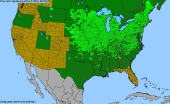
 14
14




Mandrake...takes on and holds the influence
of the devil more than other herbs because of its similarity
to a human. Whence, also, a person’s desires, whether good
or evil, are stirred up through it...
-Hildegard of Bingen, Physica
 6
6




Mandrake...takes on and holds the influence
of the devil more than other herbs because of its similarity
to a human. Whence, also, a person’s desires, whether good
or evil, are stirred up through it...
-Hildegard of Bingen, Physica
 6
6




Life's too short, eat desert first! [Source of quote unknown]
You have to be warped to weave [ditto!]
 5
5




Jill Dyer wrote:That's impressive - can you give an indication of the softness of the fibre - suitable for clothing, placemats or pot scrubbers, garden ties?
Mandrake...takes on and holds the influence
of the devil more than other herbs because of its similarity
to a human. Whence, also, a person’s desires, whether good
or evil, are stirred up through it...
-Hildegard of Bingen, Physica
 8
8




Zone 6, 45 inches precipitation, hard clay soil




 3
3




Life's too short, eat desert first! [Source of quote unknown]
You have to be warped to weave [ditto!]




Mandrake...takes on and holds the influence
of the devil more than other herbs because of its similarity
to a human. Whence, also, a person’s desires, whether good
or evil, are stirred up through it...
-Hildegard of Bingen, Physica




Life's too short, eat desert first! [Source of quote unknown]
You have to be warped to weave [ditto!]
 3
3





|
These are the worst of times and these are the best of times. And this is the best tiny ad:
The new purple deck of permaculture playing cards
https://www.kickstarter.com/projects/paulwheaton/garden-cards
|






